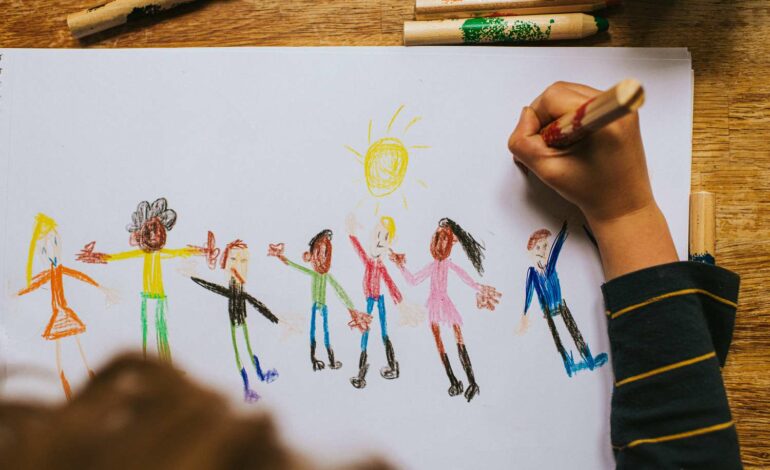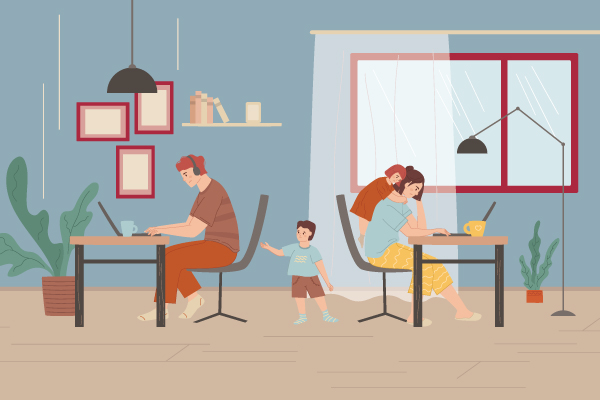Unlocking Creativity: Art Therapy Programs for Children With Autism

Art therapy programs cater to children with autism and provide a creative outlet that helps improve their social and communication skills. These programs are specifically designed to engage children with autism in artistic activities, such as painting, drawing, and sculpting, that allow them to express themselves and develop their emotional understanding.
By participating in art therapy, children with autism can enhance their sensory integration, fine motor skills, and cognitive abilities. Art therapy offers a non-verbal mode of communication, enabling children with autism to communicate and connect with others in a supportive and inclusive environment.
These programs are an effective and beneficial approach to empower children with autism and promote their overall well-being.

Credit: cordovanartschool.com
Understanding Autism Spectrum Disorder (Asd)
Autism spectrum disorder (asd) is a complex developmental disorder that affects children worldwide. It presents challenges that can make everyday tasks difficult. Early intervention is crucial for children with asd, as it helps address the unique needs of each individual.
Understanding the importance of art therapy programs is key in aiding their development. These programs provide a creative outlet, allowing children to express themselves in a non-verbal way. Moreover, they help improve communication skills and foster social interaction. By engaging in art therapy, children with asd can develop a better understanding of emotions and enhance their cognitive abilities.
Overall, art therapy programs play a vital role in supporting the growth and well-being of children with asd, providing them with a safe and structured environment to express themselves freely.
The Role Of Art Therapy In Unlocking Creativity For Children With Autism
Art therapy programs play a significant role in unlocking the creativity of children with autism spectrum disorder (asd). By exploring the therapeutic use of art, these programs aim to enhance communication and social skills. Through various art forms, such as painting and drawing, children with asd can express themselves more freely.
Art therapy provides a safe space for them to explore their emotions, boosting self-expression and emotional well-being. The non-verbal nature of art allows children to communicate their thoughts and feelings that they may struggle to express verbally. Additionally, engaging in art activities can help children with autism feel more connected to their surroundings and improve their overall sense of well-being.
Art therapy programs thus offer a valuable avenue for children with asd to develop their artistic skills and promote personal growth.
Designing Effective Art Therapy Programs For Children With Autism
Art therapy programs for children with autism are crucial for their development. By tailoring art activities to meet the unique needs of children with autism spectrum disorder (asd), these programs enable sensory and motor skills development. The incorporation of such skills helps children with asd to improve their coordination and express themselves creatively.
Creating a safe and supportive environment is vital in art therapy, as it encourages artistic expression while fostering a sense of comfort and security. These programs aim to provide a holistic approach to supporting children with autism, allowing them to explore their emotions, enhance self-esteem, and develop essential communication and social skills.
Through the power of art therapy, children with autism can thrive and reach their full potential, improving their overall well-being and quality of life.
Success Stories: Art Therapy Programs For Children With Autism
Art therapy programs for children with autism have shown remarkable success. Case studies highlighting the positive impact of art therapy reveal its transformative effects on participants. Testimonials from parents, educators, and therapists consistently emphasize the profound progress and achievements children with autism make through art therapy.
Art therapy provides a safe and expressive outlet for children to communicate and process their emotions, fostering better self-awareness and self-esteem. Through creative activities, children develop crucial social skills, enhancing their ability to connect and interact with others. Moreover, art therapy encourages sensory integration and fine motor skills development, which can significantly improve their daily lives.
The success stories of art therapy programs for children with autism demonstrate the immense potential of this therapeutic approach, offering hope and support to families and individuals affected by autism.
Collaborating With Parents, Educators, And Therapists
Collaboration with parents, educators, and therapists plays a crucial role in art therapy programs for children with autism. This partnership is essential to empower parents, enabling them to continue therapeutic practices at home. Additionally, it involves providing training and support for educators and therapists in implementing art therapy programs effectively.
By working together, parents can gain a deeper understanding of their child’s needs and learn strategies for incorporating art therapy into their daily routines. Educators and therapists can also benefit from collaboration, as they receive guidance on adapting art therapy techniques to the educational setting.
This collaboration ensures a holistic approach to supporting children with autism, promoting their social, emotional, and cognitive development. By bridging the gap between therapy sessions and home or school environments, art therapy programs can have a lasting and meaningful impact on children with autism.
Overcoming Challenges In Art Therapy Programs For Children With Autism
Art therapy programs for children with autism face unique challenges related to sensory sensitivities and limited verbal communication. These programs strive to address these challenges by creating a supportive environment where children can engage in art activities. A key consideration is accommodating sensory sensitivities, such as providing materials with different textures.
Additionally, therapists focus on handling meltdowns effectively, ensuring emotional safety for the child. Encouraging participation is vital, involving techniques like visual prompts and rewards. For non-verbal or minimally verbal children, therapists adapt their strategies by using alternative forms of communication, like visual aids or sign language.
Through creative adaptations and individualized approaches, art therapy programs can help children with autism express themselves and enhance their overall well-being and development.
Expert Insights: Advice And Tips For Implementing Art Therapy Programs
Art therapy programs can be beneficial for children with autism, offering an outlet for self-expression and communication. Expert insights emphasize the importance of carefully selecting and developing art activities that cater to the individual needs and interests of each child.
Professionals and caregivers are advised to regularly evaluate the progress of the child and make necessary modifications to the approach. By considering expert opinions and recommendations, participants can ensure the implementation of best practices in art therapy for children with autism.
Through engaging in art therapy, children can enhance their emotional well-being, social skills, and cognitive abilities. With the right support and guidance, art therapy programs can make a positive impact on the lives of children with autism, providing them with a creative and therapeutic outlet for self-discovery and personal growth.
The Future Of Art Therapy For Children With Autism
Art therapy programs for children with autism are constantly evolving to better address their unique needs. Advancements in technology and virtual art therapy have opened up new possibilities for reaching more children with limited access to traditional therapy. Researchers and innovators in the field of art therapy are continually studying the effectiveness of different approaches and developing innovative techniques specifically tailored for children on the autism spectrum.
The future of art therapy for children with autism looks promising, with expanding access to underserved communities and a dedication to ongoing research and innovation. These advancements provide hope for improving the lives of children with autism and expanding their opportunities for creative expression and personal growth.
By harnessing the power of art and technology, art therapy continues to pave the way for a brighter future for children with autism.
Frequently Asked Questions On Art Therapy Programs For Children With Autism
What Are Art Therapy Programs For Children With Autism?
Art therapy programs for children with autism are structured activities that use art materials and creative expression to help improve communication skills, social interaction, and emotional regulation. These programs are designed to provide a safe and supportive environment for children with autism to explore their thoughts, feelings, and sensory experiences through art.
How Do Art Therapy Programs Benefit Children With Autism?
Art therapy programs benefit children with autism by providing a non-verbal means of expression, promoting creativity and imagination, and enhancing fine motor skills. These programs also help children with autism develop problem-solving and decision-making skills, improve self-esteem and self-awareness, and reduce anxiety and stress.
What Types Of Art Activities Are Included In These Programs?
Art activities in art therapy programs for children with autism vary depending on the needs and abilities of the children. Some common activities include drawing, painting, collaging, sculpting, and sensory-based art experiences. These activities are tailored to engage children with autism and support their individual strengths and interests.
How Are Art Therapy Programs Specifically Adapted For Children With Autism?
Art therapy programs for children with autism are specifically adapted by trained art therapists who understand the unique needs and communication styles of individuals on the autism spectrum. These programs may include visual schedules, structured routines, visual supports, and sensory interventions to create a predictable and supportive environment for children with autism.
Are Art Therapy Programs Suitable For All Children With Autism?
Art therapy programs can be beneficial for children of different ages and abilities on the autism spectrum. However, the suitability of art therapy programs may vary depending on the individual needs and preferences of each child. It is important to consult with a professional art therapist to determine if an art therapy program is suitable for a specific child with autism.
Conclusion
Art therapy programs have proven to be incredibly beneficial for children with autism. Through the use of various art forms, these programs provide a safe space for children to express themselves and enhance their social and emotional skills. By engaging in art activities, children with autism can develop their creativity, improve their communication, and alleviate anxiety and stress.
The structured nature of art therapy sessions helps children with autism feel secure and supported, allowing them to explore their thoughts and feelings in a non-verbal manner. Furthermore, art therapy programs offer a multi-sensory approach that caters to the diverse needs of children with autism.
Sensory integration is integral in these programs, helping children regulate their responses to sensory stimuli and promoting self-awareness. Additionally, these programs foster a sense of accomplishment and self-esteem as children produce tangible works of art and witness their progress over time.
Art therapy programs are an effective and valuable approach for children with autism. By harnessing the power of creative expression, these programs enable children to discover their strengths, enhance social interactions, and navigate the challenges of living with autism.














